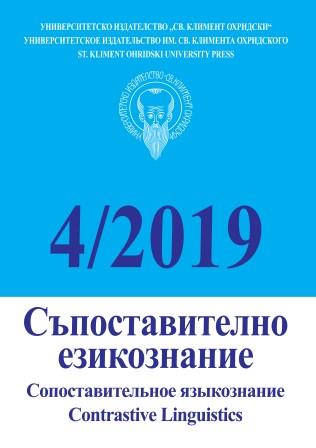Esses and haberes in Slavic be- and have-languages (Part 1)
Esses and haberes in Slavic be- and have-languages (Part 1)
Author(s): Jungwon ChungSubject(s): Language and Literature Studies, Foreign languages learning, Theoretical Linguistics, Philology, Translation Studies
Published by: Софийски университет »Св. Климент Охридски«
Keywords: Slavic; have; be; language classification; be-language; have-language
Summary/Abstract: This two-part article examines the characteristics and peculiarities of the Slavic haberes and esses, comparing their lexical and grammatical functions, especially in Russian, Polish, Czech, Bulgarian, and BSC. Part 1 of the article explores, above all, how these Slavic haberes serve as a content and function word. The Polish, Czech, Bulgarian, and BCS haberes are used very widely and frequently. Their haberes refer to possessive relations in both narrow and wide senses and have significant grammatical functions, such as an existential sentence marker, a modal verb, and a perfect tense auxiliary. On the other hand, the Russian habere is more restricted to idiomatic expressions, specific styles and syntactic constructions, and does not have any grammatical function.
Journal: Съпоставително езикознание / Сопоставительное языкознание
- Issue Year: 2019
- Issue No: 4
- Page Range: 25-40
- Page Count: 16
- Language: English
- Content File-PDF

